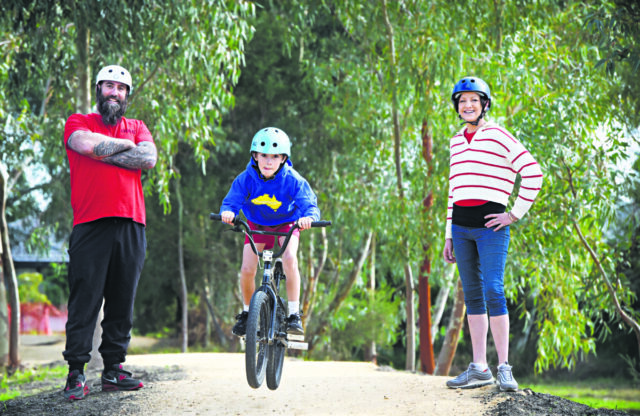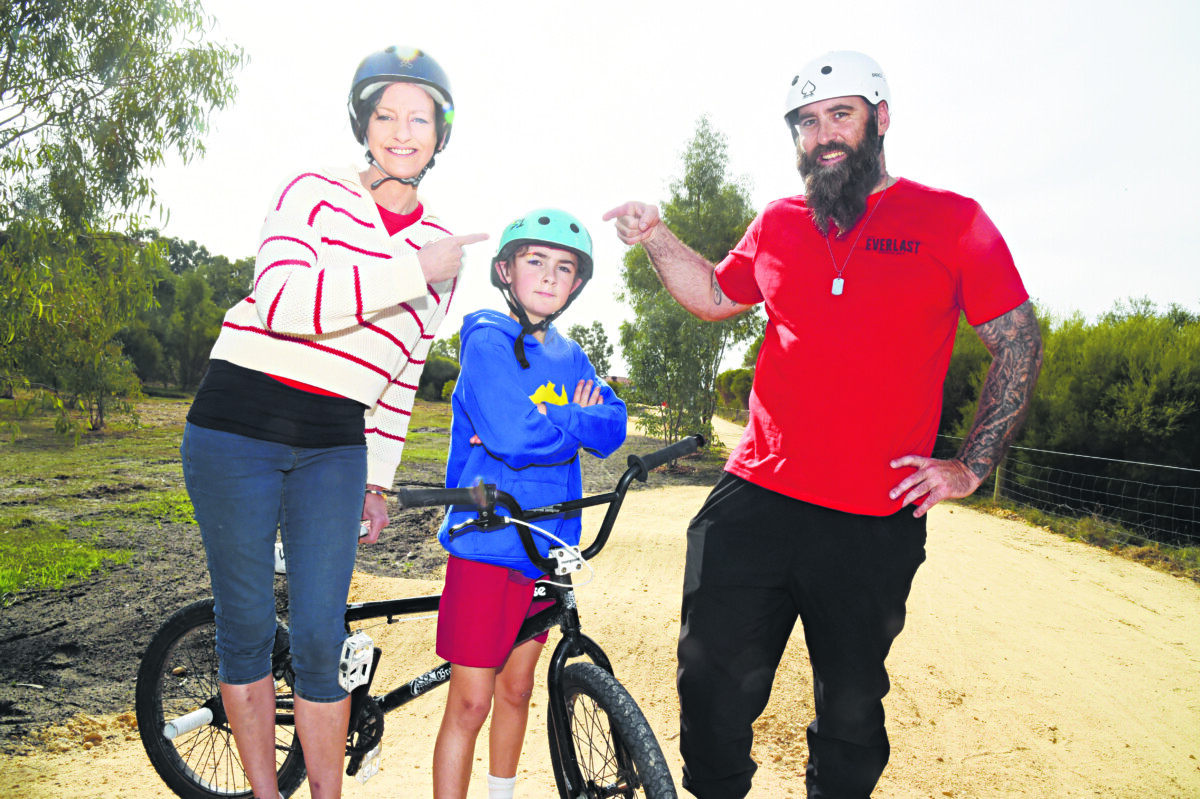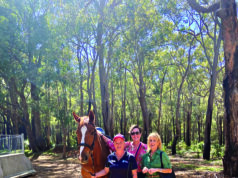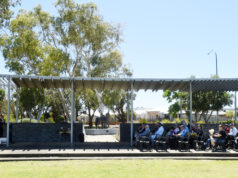
Lila Ferry didn’t just set out to start a safety campaign.
But after watching too many kids, and adults zoom through the streets of Canning Vale without helmets, she and her 10-year-old son Callan decided it was time to do something.
“We weren’t sure if we were only noticing people without helmets because that’s what we were looking for,” Lila said.
“So, we figured that we would spend a few days actually counting a tally to see if it was as big a problem as we kind of thought it was, and the tally spoke for itself. We figured having stats to actually start the conversation may make a difference.”
Over three days, they tallied 35 helmeted riders and 77 unhelmeted riders.
They observed people around skate parks, streets, and school zones.
“Even at the local skate park, there were heaps of people without any on, kids on the ramps even,” Lila said.
It wasn’t just the numbers that bothered them.
It was the fact that so many of these riders were children, some zooming around with helmets dangling from handlebars, others doing jumps at the park with no protection at all.
“In a couple of cases, some riders had their helmets, but hung them off the handlebars instead of wearing them,” Callan said.
“This just seems silly. Imagine if they crash and the helmet is there next to them.”
Lila, a parent and local driver, said, “As a parent, it’s super important to set an example.”
She added, “As a driver, I make mistakes, as does everyone, and it’s just scary. A helmet can make all the difference because heads are not made to hit hard concrete.”
Callan, who’s taken it upon himself to make “helmet crew” cool at school, worries about his friends. “I worry about my friends who don’t wear helmets getting hurt. I try to tell them, especially if we are doing jumps on our bikes.”
Their experience reflects a wider concern playing out on community forums and footpaths across the southern suburbs.
“Maybe parents need to give kids with e-scooters a timely reminder of the dangers,” one local warned.

Others described kids speeding on roads, dodging cars, and racing through pedestrian zones with no helmets in sight. “I am scared as a driver,” another person wrote.
And it’s not just fear. It’s grief too.
Earlier this month, 51-year-old Thanh Phan was killed in Perth’s CBD after being struck by an alleged drunk e-scooter rider.
He had been out to dinner when the tragedy struck.
It was the first pedestrian death involving an e-scooter in WA. In response, the City of Perth and the City of Vincent have both suspended their e-scooter share schemes.
According to WA Police, the risk is real and growing.
“With a rise in popularity of Electric Rideable Devices (ERDs), including eScooters, a heightened risk of serious injury or death may occur as a result of riding these devices without adequate safety protection,” a police spokesperson said.
Police confirmed four ERD-related deaths in WA this year, and several serious injuries, including those involving children and teenagers. As part of their response, officers have started carrying out statewide enforcement operations.
They said enforcement will continue across the metro area in coming months, with a focus on speeding, mobile phone use, riding under the influence, helmet use, and rider age limits.
“All road laws that apply to motor vehicles also apply to ERDs, unless expressly excluded,” police said.
The state government is also stepping in. This week, Road Safety and Police Minister Reece Whitby moved a motion in Parliament to establish the inquiry, tasking the Community Development and Justice Standing Committee with investigating how to improve the regulation of e-scooters and similar devices.
The bipartisan committee will review penalties for illegal use, consider curfews in entertainment precincts, and assess rules for both privately owned and for-hire e-rideables.
The inquiry will also examine injury data, including the time and location of incidents, severity, and whether the devices involved were privately owned or rented.
It will look into the role of the Commonwealth in preventing non-compliant imports and review regulations around commercial e-rideable hire services.

“This latest commitment follows my work with WA Police, who carried out an enforcement blitz in entertainment precincts this past weekend,” Mr Whitby said.
He added that the Road Safety Commission had been asked to boost education and awareness efforts around the legal use of e-rideables.
The committee is expected to present its findings by the end of September.
Local governments are watching the trend closely.
In response to questions from Examiner Newspapers, City of Gosnells Mayor Terresa Lynes said, “The use of e-scooters and bikes is regulated by State Government legislation. Unlawful use of e-scooters or bikes should be reported to WA Police.”
“The City of Gosnells does not plan to issue any permits or contracts for e-scooter share schemes to operate within the City,” Mayor Lynes added.
The City of Canning has also received a handful of general complaints.
“We have had a handful of general complaints since the legislation was implemented regarding unsafe e-ridable use, however not specifically around schools or minors not wearing helmets,” Mayor Patrick Hall said.
“The legislation is e-rideable users must be 16+ so there would be very few minors that are legally allowed to ride the devices regardless of helmet use.”
Mayor Hall said the correct authority for reporting offences is WA Police (131 444), and confirmed that cyclists and e-riders are expected to follow the road rules like any driver.
The City of Canning has previously run social media campaigns and workshops and remains open to doing more “if there is community need.”
The city also works with schools through the Department of Transport’s Your Move program.
“As part of the program, helmet safety awareness and e-rideable legislation is communicated to the schools,” Mayor Hall said.
While there are no specific reviews planned for e-scooter infrastructure, the city is reviewing its broader Integrated Transport Strategy.
“The strategy includes more generally emerging technologies such as e-rideables and how they fit into the current transport system,” Mayor Hall said.
He noted that legislation is set at the state level.
“As e-rideables are a relatively new transport mode there is not a sufficient local evidence base for the city to form a position on broader safety and regulation.”
But for Lila and Callan, this isn’t about laws. It’s about lives and leadership. And they believe change starts with schools and early education.
“I remember there being so many media campaigns growing up, ads on the TV, Constable Care, etc. It’s all been a bit quiet now,” Lila said.
“Possibly, in an area where we have a lot of multicultural and migrant population, some parents are not educated.”
“I don’t feel like most people know it’s law to wear one,” she said.
“If I search for helmet safety ads, there isn’t anything really recent. All the kid-focused ads seem to be from the 1980s.”
Callan added, “It would be good if the school had signs up to wear helmets, especially at the bike racks. And both coming in and going out the front gate. Make it visible.”
His school is just across from a new bike pump track. Callan wants signs there too. “Wear a helmet” might not seem like much. But to Callan, it could be the difference between a bump and a brain injury.
“Start early. I would like to see the school and local council and the Australian government be more proactive with education and not just for the older years,” Lila added.
Until then, they’re sticking to their family rule.
“We have taken the stance no helmet, no ride, no exception,” Lila said. “This means if out somewhere and there is a spare bike or scooter, unless there is a spare helmet, we just don’t ride.”













